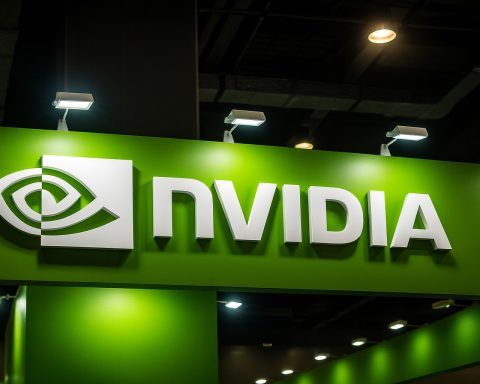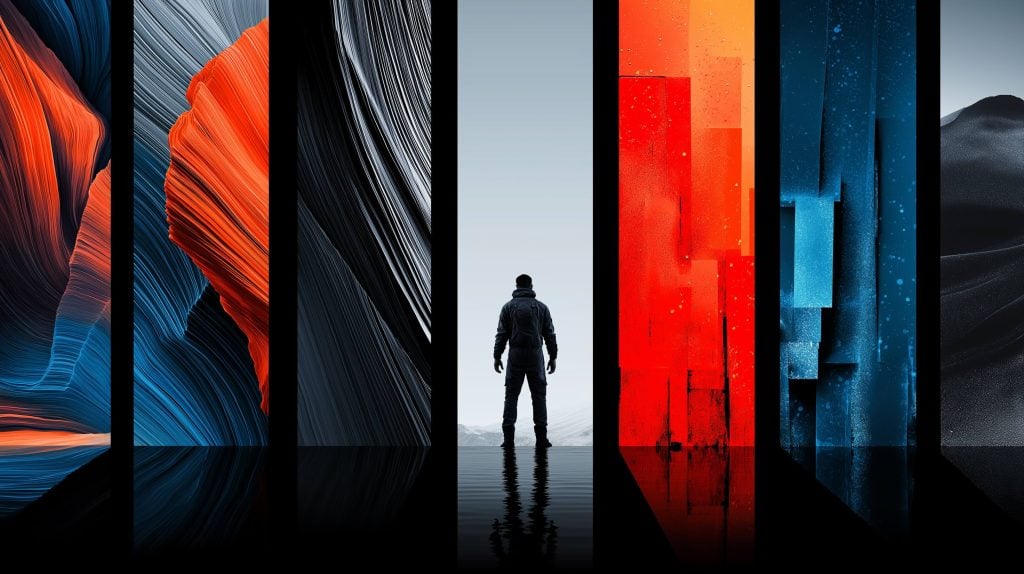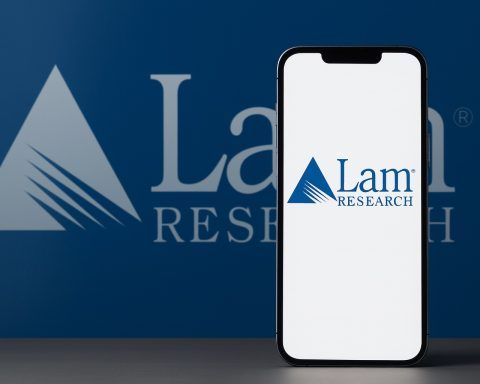- Perplexity’s Comet is a Chromium-based AI browser available today to Perplexity Max subscribers and waitlisted users, with Windows and macOS support and mobile versions in development.
- Comet’s AI automation sidebar can automatically compare shipping options across online stores to find the fastest shipping or best return policies.
- xAI’s Grok 4 is now accessible to individual SuperGrok and Premium+ subscribers and via the xAI API, with live web search and the ability to run code.
- Grok 4 features advanced multi-modal understanding and a powerful reinforcement-learning backbone on a 200,000-GPU supercomputer, plus a new “Grok 4 Heavy” top-tier setting.
- Hugging Face’s SmolLM3 is a 3-billion-parameter open-source model trained on 11 trillion tokens, with context windows up to 128,000 tokens and support for six languages.
- SmolLM3 reportedly outperforms Meta’s Llama-3.2B and Alibaba’s Qwen-2.5B while remaining competitive with larger 4B models.
- Google’s Pixel Drop delivers Veo 3 video generation on Pixel 9 Pro with a free year of Google AI Pro, introduces the AI filmmaking app Flow and higher image-to-video limits, and brings Gemini to the Pixel Watch via Wear OS 4.
- AI Mode for Circle-to-Search allows follow-up questions with cited sources about on-screen content, including in-game moments.
- Zoom’s AI Companion gains agentic capabilities with the Custom AI Companion add-on at $12 per user per month and integration with over 16 apps across Zoom, Teams, and Google Meet to perform tasks during meetings.
- Google and Microsoft expand AI in education, with Google offering 30+ educator AI tools and free Gemini for Education (NotebookLM integration and Gems tutors), and Microsoft adding Copilot Chat for Students plus educator-focused Copilot features in Teams, Word, and OneNote with training emphasis.
From a mind-reading web browser to a school-savvy chatbot, today’s AI tool announcements span every corner of life. In this daily roundup for July 14, 2025, we break down the most important new AI tools and updates that just dropped – across productivity, creativity, education, communication, and general utility. Each section details what the tool does, why it’s noteworthy, and how experts and early users are reacting. Read on to catch up on the latest AI innovations now available to the public (no enterprise-only tech here). Let’s dive in!
Perplexity’s Comet – An AI Browser That Automates Your Workflow
One of today’s buzziest launches is Comet, a new web browser from startup Perplexity AI that builds a personal assistant right into your browsing. Comet is built on Chromium (the same engine as Google Chrome), so it supports all your favorite Chrome extensions and bookmarks for seamless switching [1]. What sets Comet apart is its AI automation sidebar: an AI helper that can perform tedious online tasks for you. For example, Comet’s assistant can comparison-shop automatically – it will scan shopping sites to find which store offers the fastest shipping or best return policy for a product, saving you the trouble [2]. It can also streamline online research by reading whatever tabs you have open and answering questions about them, so you don’t have to copy-paste text into a separate tool [3].
Perplexity has baked its advanced search engine and GPT-style AI into the browser to turn web surfing into a conversation. “The internet has become humanity’s extended mind while our tools for using it remain primitive,” the Perplexity team wrote, noting that Comet aims to “amplify our intelligence” by letting users ask questions and execute tasks in one fluid workflow [4] [5]. Early access is rolling out now: Comet is available today for subscribers of the company’s Perplexity Max plan (a pro-tier service) and to waitlisted users, with broader free access expected later this year [6]. Windows and macOS are supported at launch, and mobile versions are in the works [7]. This AI-enhanced browser could be a game-changer for productivity hounds – it essentially transforms web browsing from a manual hunt-and-click exercise into a collaborative session with an intelligent co-pilot.
xAI Grok 4 – Elon Musk’s Chatbot Gets Smarter (and Publicly Available)
Elon Musk’s AI venture xAI announced a major update to its flagship AI assistant, Grok 4, which the company boldly calls “the most intelligent model in the world” [8]. Grok is essentially Musk’s answer to ChatGPT – a generative AI chatbot – and version 4 is now rolling out to users via subscription. Crucially, Grok 4 was trained to use tools natively and perform live web searches, meaning it can fetch real-time information on its own to enhance its answers [9] [10]. This is something even OpenAI’s models only offer through add-ons, so Grok is leaning into up-to-the-minute research abilities. The new model also boasts advanced multi-modal understanding (so it can interpret text, code, images, etc.) and stronger reasoning skills thanks to a massive reinforcement learning run on xAI’s 200,000-GPU supercomputer [11]. In fact, xAI has a high-octane “Grok 4 Heavy” version setting new benchmark records in complex reasoning and math tasks [12].
Starting now, anyone can try Grok 4 – if they’re a paying customer. It’s available to individual SuperGrok and Premium+ subscribers, as well as via the xAI API for developers [13]. Musk’s team also introduced a new top-tier subscription (“SuperGrok Heavy”) to give power-users access to the highest-performance model [14]. Why all the excitement? Grok 4’s ability to query the internet and even run code means it can handle far more complex questions on the fly. For instance, it can search breaking news or scour social media to answer a timely question, or invoke a code interpreter to solve a tough programming puzzle. “Grok 4 was trained with reinforcement learning to use tools… augment its thinking with a code interpreter and web browsing in situations that are usually challenging for [LLMs],” xAI explains [15]. Early testers have noted the system feels less constrained than competitors – a reflection of Musk’s ethos – though xAI had to apologize last week for some offensive outputs. Nonetheless, with Grok 4 now openly accessible (and even landing a U.S. government trial), it’s a significant new player in the public AI chatbot arena.
Hugging Face SmolLM3 – A Tiny, Open AI Model Punching Above Its Weight
For the open-source AI community, today brought a notable new release from Hugging Face: SmolLM3, a “smol” (small) language model that proves size isn’t everything. SmolLM3 has just 3 billion parameters – tiny compared to GPT-4’s estimated hundreds of billions – but it’s remarkably capable. Trained on an enormous 11 trillion tokens, this model achieves state-of-the-art performance for its size and even rivals some models larger than 4B parameters [16] [17]. Hugging Face optimized SmolLM3 to hit a sweet spot of efficiency and power: it supports long context windows up to 128,000 tokens (meaning it can ingest massive documents or transcripts) and features a dual-mode reasoning approach that lets it switch between fast answers and more thoughtful, step-by-step reasoning [18]. Impressively, SmolLM3 is multilingual, fluent in six languages (English, French, Spanish, German, Italian, Portuguese) despite its compact size [19].
What makes SmolLM3 most noteworthy is that it’s fully open-source and comes with a detailed engineering recipe for the AI community [20]. The creators have shared exactly how they built and fine-tuned the model, including novel training techniques to boost reasoning ability. This transparency is a boon for researchers and developers looking to build on SmolLM3 or replicate its results. According to Hugging Face’s evaluation, SmolLM3 “outperforms [Meta’s] Llama-3.2B and [Alibaba’s] Qwen-2.5B while staying competitive with larger 4B alternatives” [21]. In other words, it’s punching above its weight class. The model – available for download and use starting today – could become a go-to for hobbyists and startups who need a powerful AI brain they can run on modest hardware or customize freely. It’s also a reminder that innovation in AI isn’t just about giant models from tech giants; sometimes a “smol” well-made model can do the trick.
Google’s Surprise Pixel Feature Drop – AI Video Generation, Smart Search & More on Your Phone
Google sprung a mid-cycle Pixel Feature Drop this week that’s all about AI, bringing powerful new tools straight to Pixel smartphone owners. First up, Pixel 9 Pro users are getting a free year of “Google AI Pro”, a subscription that unlocks Google’s most advanced consumer AI features [22]. This means if you have a Pixel 9 Pro, you can now try cutting-edge generative tools at no cost – including Google’s brand-new Veo 3 model that magically turns your ideas into short videos [23]. Users can simply describe a scene or concept, and Veo 3 will generate a high-quality video complete with natural audio, effectively acting like an “AI filmmaker” on your phone [24]. (Pixel owners also get to play with Flow, a new AI filmmaking app built around Veo 3, plus higher limits for image-to-video creations [25].) This is the first time powerful video generation has been available on a smartphone platform – a big leap for mobile creativity.
Another highlight is “AI Mode” for Pixel’s Circle-to-Search feature, now live in the U.S. and India [26]. Pixel users have been able to circle an object or text on their screen to search it; with AI Mode, you can now ask follow-up questions and get in-depth answers with cited sources about whatever you’re viewing [27]. For example, circle a news snippet or a product spec sheet, and you can ask, “Explain this to me” or “What’s the best alternative?” – the AI will answer in detail and even provide reference links [28]. Notably, Google is even integrating in-game assistance: if you’re stuck in a mobile game, you can screenshot your scene and ask for help, and Circle-to-Search will fetch articles or videos timestamped to your exact spot in the game [29] [30]. It’s like having a context-aware walkthrough on demand, without ever leaving the game.
Lastly, Google’s own AI Gemini assistant is arriving on the Pixel Watch via Wear OS [31]. Now your smartwatch can leverage the same advanced models powering Google’s latest AI features. In practice, this means you can ask your Pixel Watch (if running Wear OS 4+) to do things like send texts, provide directions, plan trips, set reminders, summarize emails, and more using natural language [32]. It essentially brings a mini ChatGPT-like experience to your wrist for quick tasks on the go. The tech press is calling this Pixel Drop a “surprise announcement” that wasn’t expected until much later [33], underlining Google’s urgency in rolling out AI enhancements. By baking generative AI into Pixel phones and watches – from creative content generation to smarter search and personal assistance – Google is turning its consumer devices into true AI-powered companions.
Zoom’s AI Companion Gets “Agentic” – Smarter Meetings and Integrations
Zoom is evolving from a video app into an AI-powered productivity hub. Today the company introduced new “agentic AI” capabilities for its Zoom AI Companion, aiming to take the drudgery out of virtual meetings and related tasks [34]. The buzzword “agentic AI” refers to AI that can act autonomously on a user’s behalf, and Zoom’s updated companion can now orchestrate tasks across a bunch of apps without you lifting a finger. For example, the Custom AI Companion add-on (a new paid option) lets Zoom connect to over 16 popular third-party apps – from Slack to Salesforce to Notion – without leaving the Zoom interface [35] [36]. In a practical sense, this means during a Zoom call you could ask the AI to pull up relevant info from a Salesforce database, log a ticket in ServiceNow, post a summary to Slack, or fetch a file from Google Drive – all through natural-language commands. It even integrates with Microsoft Teams and Google Meet, so Zoom’s AI can work across rival platforms too [37] [38].
These upgrades build on features Zoom rolled out earlier in the year. The AI Companion could already do things like automatically schedule meetings, generate highlight clips from recordings, and draft emails or documents based on meeting content [39]. Now, by giving it access to external apps and data, Zoom is pushing toward a future where your virtual meeting assistant can handle follow-ups and busywork for you. “With Zoom AI Companion’s agentic skills, users will see a significant productivity boost to help them get more done – not just in Zoom,” says Smita Hashim, Zoom’s Chief Product Officer [40]. In other words, Zoom’s AI isn’t just transcribing your meetings; it wants to be your all-purpose office aide. Starting today, the Custom AI Companion is available as an online purchase for anyone on a paid Zoom plan, priced at $12 per user per month [41]. Early industry reactions note that Zoom is positioning itself as a hub for work tasks – if the AI can save users time by automating actions across apps, it may keep them glued to the Zoom ecosystem for more than just calls.
NVIDIA DiffusionRenderer – A Breakthrough AI Tool for Creators and Robots Alike
Not all the day’s AI news is consumer-facing – some is about cutting-edge tech that will soon power the tools of tomorrow. NVIDIA’s research arm just unveiled DiffusionRenderer, a new AI-based system for generating and editing images with extreme precision. Shown at the CVPR 2025 conference, DiffusionRenderer addresses a common gripe with today’s generative art models: lack of control. “Generative AI has made huge strides in visual creation, but it introduces an entirely new creative workflow … and still struggles with controllability,” explains NVIDIA VP of AI Research Sanja Fidler [42]. Her team’s goal with DiffusionRenderer is to combine “the precision of traditional graphics pipelines with the flexibility of AI” to make image generation far more accessible and controllable [43]. In practical terms, this tool can take a standard 2D video or image and reverse-engineer a 3D scene from it – capturing the geometry and materials of the scene – and then allow a creator to re-light and edit that scene however they want [44] [45]. It’s like pulling a 3D model out of a video and then tweaking the lighting and textures to get a perfect shot.
Why does this matter? With DiffusionRenderer, artists and designers could use AI to add, remove, or adjust objects and lighting in a photo-realistic way without needing to painstakingly render scenes by hand. Fidler calls it “a huge breakthrough because it solves two longtime challenges in computer graphics simultaneously – inverse rendering … and forward rendering for generating photorealistic images and videos from scene representations” [46]. In tests, the system could ingest real video footage, extract an accurate 3D understanding, and then generate new images of that scene under different lighting conditions or from new angles [47]. This opens up exciting possibilities: content creators could quickly generate alternate shots for a film or ad; game developers could let AI handle tedious environment tweaks; even robotics researchers could generate diverse training data by simulating the same scene with new lighting or materials [48] [49]. “We’re excited to keep pushing the boundaries in this space… making traditionally time-consuming tasks like asset creation, relighting, and material editing more efficient,” Fidler says [50]. While DiffusionRenderer is still a research project (not a commercial app you can download today), it’s inspiring experts who see it as a bridge between AI’s creativity and human artistic control. Don’t be surprised if its underlying tech finds its way into the next generation of 3D graphics and editing software.
Google Brings Gemini AI to Classrooms – 30+ New Education Tools Go Live
AI isn’t just for business and play – it’s transforming education, too. Google announced a sweeping set of AI updates for schools aimed at making both teaching and learning more engaging. At the ISTE ed-tech conference, the company introduced “more than 30 AI tools for educators,” plus a special education-focused version of its Gemini AI app and new features for students [51]. Starting today, Google’s Gemini for Education suite is free for all Google Workspace for Education accounts [52]. This includes a host of intelligent assistance features: for example, teachers can use AI to brainstorm lesson plan ideas, generate classroom materials, and personalize content for different learning levels [53]. Over the coming months, Google will also integrate its NotebookLM research tool with educators’ own curricular content, letting teachers create interactive study guides automatically from their lesson docs [54]. It’s like having a teacher’s aide who can whip up quizzes, summaries, or examples on demand.
Perhaps the most intriguing feature is the ability for teachers to create custom AI tutors called “Gems.” Essentially, an educator can train a mini chatbot on their class materials and curriculum, and deploy it to help students after hours [55]. These Gems act as AI subject experts that understand exactly what was taught in class, so when a student is stuck on homework at 9 PM, they can ask the class Gem for help rather than turning to a generic AI (which might give the wrong info or let them cheat too much). It’s Google’s answer to the influx of students using ChatGPT on assignments: keep them in a guided environment. Google is positioning these tools as enhancements to, not replacements for, human teachers. The company insists that “responsible AI” use can “drive more engaging and personalized learning experiences” when paired with teacher guidance [56]. Early reaction from educators is cautious optimism. Many teachers welcome support in handling repetitive tasks like grading and creating practice problems, so they can spend more one-on-one time with students. At the same time, they stress the need for training in using these tools correctly. “Teachers are saying, ‘I need training… high quality, relevant, and job-embedded,’” notes Code.org’s Chief Academic Officer Pat Yongpradit, emphasizing that professional development is key if AI is to truly help in the classroom [57]. With Google’s new education AI rolling out (and rival offerings from Microsoft and others not far behind), this school year could see the start of an AI-assisted learning revolution – one where teachers work smarter, and students get more personalized help, thanks to some clever algorithms.
Microsoft’s Copilot Learns Its ABCs – New AI Tools for Educators and Students
Not to be outdone, Microsoft is also bringing AI to the classroom in a big way. Around the same time as Google’s news, Microsoft announced that its own AI assistant, Microsoft 365 Copilot, is getting education-focused upgrades. The company is rolling out Copilot Chat for Students – essentially a tailored AI chat experience that schools can enable for teen students as a “research and reading buddy” – and introducing new AI features for educators in tools like Teams, Word, and OneNote [58]. In a June 25 release, Microsoft detailed how Copilot can help teachers do things like generate lesson outlines, create quizzes or rubrics, and even analyze student progress data, all through simple prompts. The idea is to save teachers time on administrative prep work so they can focus on actual teaching. One early pilot reported that staff were encouraged to experiment freely: “We told our staff: you have permission to try, and permission to fail… those experiments don’t fail – they spark new ways of thinking,” said one assistant principal who tested Copilot in a Brisbane school [59].
On the student side, Microsoft’s tools will allow for some guardrailed AI assistance in coursework. For instance, the Copilot integration in Teams can now provide a summarized recap of a class discussion or answer a student’s follow-up question, with the teacher overseeing the accuracy. Microsoft is also publishing an “AI in Education” report with insights from educators – one standout stat: over 80% of teachers have used AI in some form this year, yet about one-third feel not confident in using it effectively [60]. To address this, programs are being set up to train teachers on AI and digital skills. “In reality, people require guidance… teachers and administrators [need] professional development” to adapt to AI, notes Pat Yongpradit (of TeachAI/Code.org) in the report [61]. Microsoft’s approach heavily emphasizes responsible use: for example, Copilot for students has built-in limits to prevent it from simply giving away answers, and it logs interactions for teachers to review. With both Google and Microsoft racing to put AI into schools, educators are excited but cautious – the consensus is that these tools could personalize learning and automate drudgery, if implemented with care and proper training. As these AI education pilots expand in the coming months, schools will be a fascinating testing ground for what AI can – and cannot – do for learning.
Sources: The information in this roundup is drawn from official announcements and credible news outlets, including Perplexity’s blog [62] [63], xAI’s Grok 4 release notes [64] [65], Hugging Face’s SmolLM3 report [66] [67], Google’s Pixel Drop announcement [68] [69], detailed coverage of Zoom’s AI update [70] [71], an NVIDIA research interview [72] [73], Google’s education blog and TechCrunch analysis [74] [75], and Microsoft’s Education blog updates [76]. Each tool or update described here is publicly available or officially announced for public access as of July 14, 2025, so you can explore them right away. Whether you’re a productivity power-user, a creative professional, a teacher, or just AI-curious, there’s something new from today’s AI surge that’s bound to catch your interest – and this is just one day’s haul. Strap in, because the pace of AI innovation isn’t slowing down anytime soon! [77] [78]
References
1. siliconangle.com, 2. siliconangle.com, 3. siliconangle.com, 4. www.perplexity.ai, 5. www.perplexity.ai, 6. siliconangle.com, 7. siliconangle.com, 8. x.ai, 9. x.ai, 10. x.ai, 11. medium.com, 12. medium.com, 13. x.ai, 14. x.ai, 15. x.ai, 16. huggingface.co, 17. huggingface.co, 18. huggingface.co, 19. huggingface.co, 20. huggingface.co, 21. huggingface.co, 22. www.gadgets360.com, 23. blog.google, 24. blog.google, 25. www.gadgets360.com, 26. www.gadgets360.com, 27. blog.google, 28. www.gadgets360.com, 29. blog.google, 30. www.gadgets360.com, 31. blog.google, 32. www.gadgets360.com, 33. www.gadgets360.com, 34. siliconangle.com, 35. siliconangle.com, 36. siliconangle.com, 37. siliconangle.com, 38. siliconangle.com, 39. siliconangle.com, 40. siliconangle.com, 41. siliconangle.com, 42. techxplore.com, 43. techxplore.com, 44. techxplore.com, 45. techxplore.com, 46. techxplore.com, 47. techxplore.com, 48. techxplore.com, 49. techxplore.com, 50. techxplore.com, 51. techcrunch.com, 52. techcrunch.com, 53. techcrunch.com, 54. techcrunch.com, 55. techcrunch.com, 56. techcrunch.com, 57. www.microsoft.com, 58. www.microsoft.com, 59. www.microsoft.com, 60. www.microsoft.com, 61. www.microsoft.com, 62. www.perplexity.ai, 63. www.perplexity.ai, 64. x.ai, 65. x.ai, 66. huggingface.co, 67. huggingface.co, 68. blog.google, 69. www.gadgets360.com, 70. siliconangle.com, 71. siliconangle.com, 72. techxplore.com, 73. techxplore.com, 74. techcrunch.com, 75. techcrunch.com, 76. www.microsoft.com, 77. techcrunch.com, 78. techxplore.com










